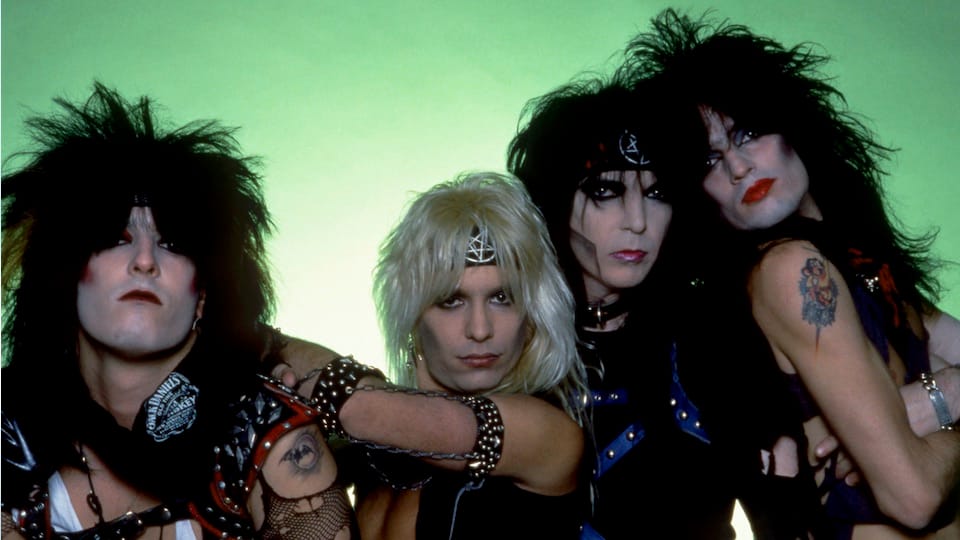The 80s “look” and “sound” evolved out of the shaggy 70s scene into something shinier, more colorful, and definitely more materialistic. Heads were crowned with mullets or giant ‘dos propped up by copious amounts of gel and hairspray. Leg warmers reflected the fitness fad (even if you never went near a Jane Fonda workout video), and shoulder pads were a symbol of female power. Music videos had an overwhelming role in shaping both stars and trends.
Coming out of the 70s, here are some pivotal moments in the evolution of 80s music.
Death of Disco
In the late 70s, disco was everywhere. The movie Saturday Night Fever sparked interest in learning dance moves like The Hustle and wearing entirely too much polyester. In 1979, Disco Demolition Night marked the rebellion against this glitzy music genre and all it represented. Folks who were tired of the platform shoes and mirrored disco balls took their aggression out by blowing up a crate of disco records on the field of Chicago’s Comiskey Park between games of a two-night doubleheader between the Chicago White Sox and the Detroit Tigers.
The Rise of MTV
A new cable channel called Music Television (MTV), launched on August 1, 1981.
Innovative videos not only introduced artists to new fans, but also boosted Madonna, Michael Jackson, Prince, and many others into superstardom. Realizing the enormous popularity of MTV, artists and record companies began making clips. A fan favorite, “MTV Unplugged,” debuted in 1989 and featured live acoustic performances by artists. By the 1990s, the novelty of just showing videos 24/7 had worn off. MTV started building more programming alternatives like the reality show, The Real World.
Boomboxes, CDs, and Walkmans
The 80s changed how we listened to music. Record stores pretty much broke the hearts of those who loved albums (scratches and all) by replacing them with cleaner-sounding CDs (which meant you were buying your music collection all over again). Before iPods or smartphones, there was the Sony Walkman, the original portable music device. If you had sturdy shoulders and wanted the world to hear what you were listening to then a large boombox was the preferred choice.
Hip-Hop Explodes
Clubs had disco but block parties had DJs, MCs, and rappers who caught the mainstream attention of record company executives. Hip-hop revived the works of pioneering artists like George Clinton by sampling their music. Rappers Salt-N-Pepa, LL Cool J, and Run-DMC are among those who rose to fame during this time.
Electronics
While the 70s largely featured musicians playing actual instruments, the 80s created a lot of sound using drum machines and synthesizers. Bands like Depeche Mode, Human League, and Flock of Seagulls fully embraced the technology and found chart-topping success.
Glam Metal
Rock and roll has seen several shifts since Elvis made 1950s parents nervous with all that gyration. Hard rock was aggressive, heavy metal was loud, but “glam” combined both with band members wearing bold makeup and hair that was sprayed and teased to the gods. Think Motley Crue, Poison, Ratt, Cinderella; eyeliner and attitude were as crucial as a great hook, and really played into the demands of the video age. While Bowie and Kiss had introduced their versions of glam in the 70s, the 80s took it to a whole other level.
Ironically, the excesses of the 80s led directly to the stripped-down “grunge” scene that would come in the 90s.
-Sharon Oliver
Photo: Motley Crue (Getty Images)





I doubt that anyone seriously considers Kraftwerk an 80s band in the same vein as Depeche Mode or The Human League, and the closest they got to “chart-topping success” in the US was their album Autobahn and its title track reaching the Top 5 and Top 30 respectively on the Billboard charts in 1975.
I stopped reading when I came to the line; “Record stores pretty much broke the hearts…” As a record store employee at that time I know, and you should too, that record stores had nothing to do with the transition to digital. Technology, then greed by the big record label conglomerates forced it down the throats of consumers. Vinyl became scarce as new music was released only on cd. Record stores became cd stores. Very painful memory indeed. Please lay the blame where it belongs. Thanks.
Good point. Those of us who spent hours scouring record stores found it hard seeing those “long boxes.” Must’ve been fun working at the store in the album heydays!
I recall most mainstream releases – and especially indie releases – being sold on vinyl as well as cassette and/or CD throughout the 1980s. Vinyl was also commonplace for record companies sending albums to radio stations until early in the 1990s.